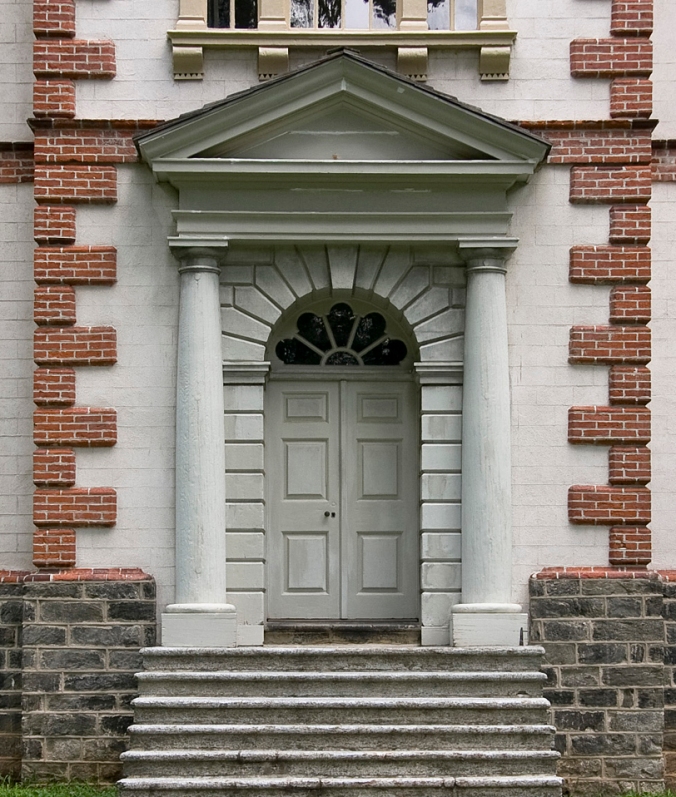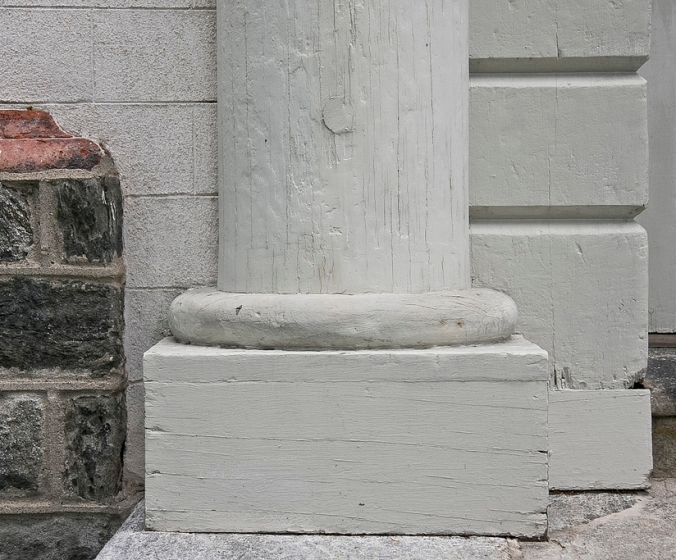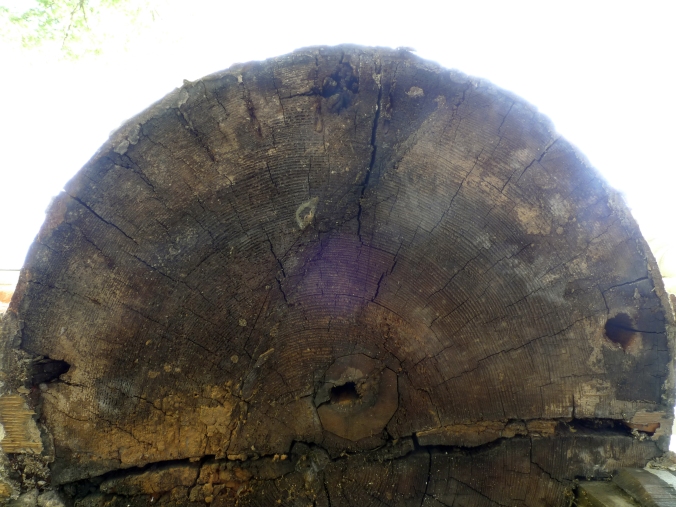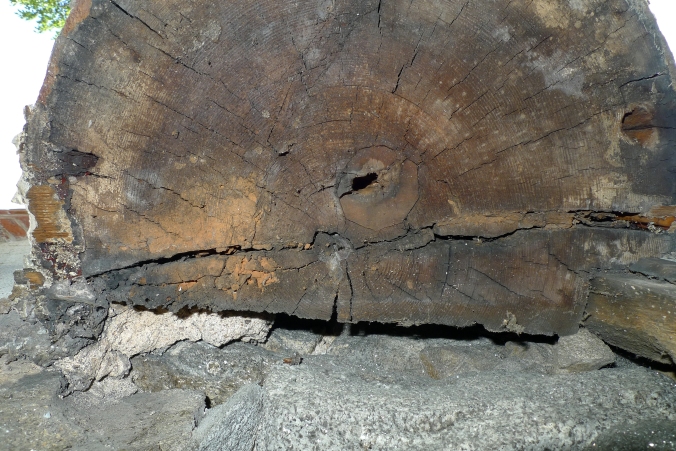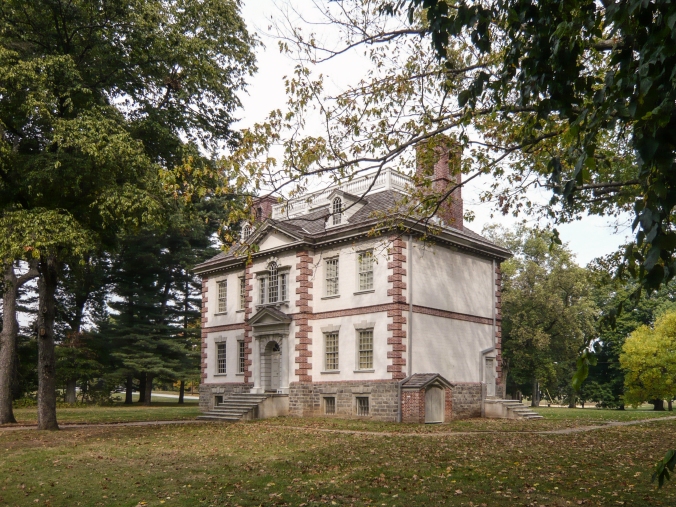The history of the west side frontispiece of Mount Pleasant in the Tuscan Order is similar to that of the east side Doric frontispiece. The original bases and plinths were lost before the beginning of the twentieth century though in this case no photographs before c. 1900 of the west side exist. The Tuscan Order is not used elsewhere at Mount Pleasant and there are few surviving instances of its use in mid-eighteenth century buildings in Philadelphia. The use of the Tuscan Order in British settings in the seventeenth and eighteenth centuries was traditionally confined to frontispieces that opened to a garden setting. That practice is confirmed at Mount Pleasant where the west side is the less formal of the two entrances and faces a terraced slope with a view towards the Schuylkill River. Even today, with the landscape much changed since the eighteenth century, there is still a dramatic difference in the sense of place between the two sides. Standing at the formal east entrance with its vista including the city in the distance, you feel more exposed to approaching visitors and the cares and concerns of the day. The west side still feels more private today, the main house and pavilions block out the city view and the river vista takes over, creating a place where the family might have gained a sense of privacy and seclusion.
Another rare survival of the use of the Tuscan Order appears at Woodford, c. 1758, located about a mile north of Mount Pleasant. Woodford’s second story was added in the 1770’s.
Three large wood plugs on the shafts of all the exterior columns cover the heads of the large spikes used to attach the columns to wood blocks inserted in the rubble stone walls as they were being laid up by the masons.
The astragal set at the base of column shaft appears to be older than the plinth supporting it. It is difficult to judge the age of the large nails used to attach it to the column due to their rusted condition. The astragal appears to have been originally produced for a different application than the base of this column though its original use is unclear.
A two inch plug in the bottom of the column is located at approximately the center of the turning, offset slightly from the center of the tree. It does not seem sturdy enough to be intended to hold the tree during turning but may have served some function in securing the tree during its transformation into a column for the frontispiece. The Carpenters Company Rule Book includes the task of “attendance on the boring” when making a solid column. Is this the bored hole? And why did it need to be plugged?
The ashlar – squared or dressed – Wissahickon schist only extends a slight distance behind the wood paneling. All other masonry work that was covered with wood or stucco was rubble stone – rough, unhewn stone that is set in mortar and not laid in regular courses.
Abraham Swan in The British Architect illustrates and describes the proper Tuscan Order.
